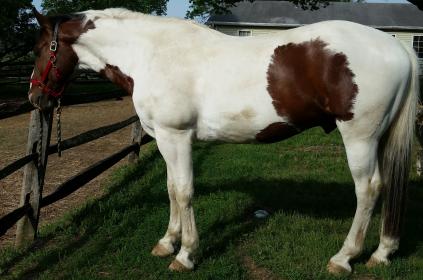I have a 9 YO 16.1 hand medium build draft x that I adore. He was pretty green when I bought him in the Spring of 2014.
I know fitness, footing, and hoof care (he has great feet and is barefoot) are the keys to keeping him sound, but I am worried that especially once we get above BN (we are planning on moving up to Novice this year) jumping will be hard on his legs.
I see much larger draft crosses competing at training and higher, but I am curious as to how well they hold up when jumping bigger. How much jumping is enough but not too much? Do you have a different training strategy for the heavier horses vs the tbs for example?
Here is a picture showing his conformation (he is not quite as downhill as he looks in this shot!)
Thanks!


 )
)